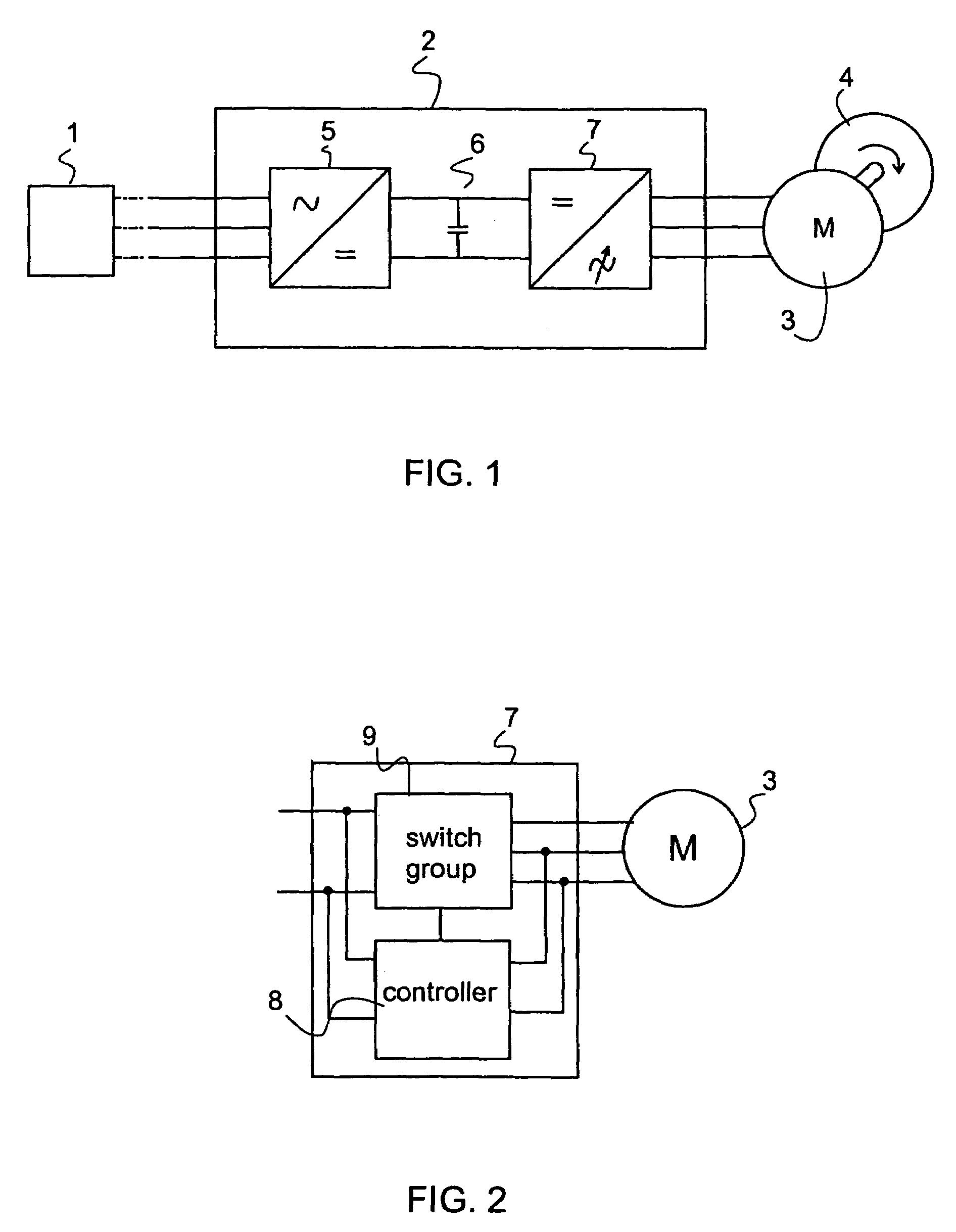Energy consumption in electrical drive
a technology of electrical drive and energy consumption, which is applied in the direction of electric devices, instruments, transportation and packaging, etc., can solve the problems of difficult to achieve simple control arrangements, and significant drawbacks of simple control arrangements, so as to achieve cost-effective and simple new corresponding arrangements
- Summary
- Abstract
- Description
- Claims
- Application Information
AI Technical Summary
Benefits of technology
Problems solved by technology
Method used
Image
Examples
Embodiment Construction
[0054]An electrical drive, one example of which is illustrated in FIG. 1, comprises an electricity supply 1, a control unit that is advantageously realized as a frequency converter 2, an AC motor 3, in this case a three-phase motor. The electrical drive is operated for running, for example rotating, a load 4 that can be for instance a pump. The electricity supply 1 comprises an alternating current mains, such as a three-phase mains, or a corresponding alternating current source for feeding electric energy into the electrical drive. The AC motor 3 is advantageously a squirrel cage motor, which is the most common electric motor used in industrial processes.
[0055]In this embodiment the control unit, in this case a frequency converter 2, comprises a rectifier 5, a direct voltage intermediate circuit 6 and an inverter 7. The inverter 7 of the frequency converter 2 is illustrated as a block diagram in FIG. 2. The inverter 7 comprises a switch group 9 and a controller 8. By means of the co...
PUM
 Login to View More
Login to View More Abstract
Description
Claims
Application Information
 Login to View More
Login to View More - R&D
- Intellectual Property
- Life Sciences
- Materials
- Tech Scout
- Unparalleled Data Quality
- Higher Quality Content
- 60% Fewer Hallucinations
Browse by: Latest US Patents, China's latest patents, Technical Efficacy Thesaurus, Application Domain, Technology Topic, Popular Technical Reports.
© 2025 PatSnap. All rights reserved.Legal|Privacy policy|Modern Slavery Act Transparency Statement|Sitemap|About US| Contact US: help@patsnap.com



